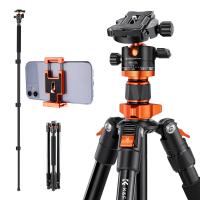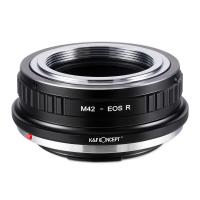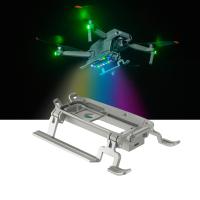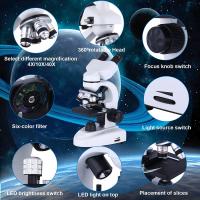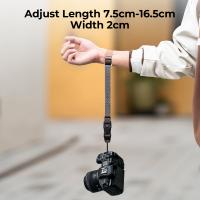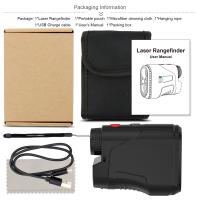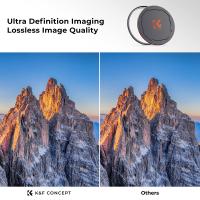What Are Polarising Camera Filters For ?
Polarizing camera filters are used to reduce glare and reflections from non-metallic surfaces such as water, glass, and foliage. They work by selectively blocking certain polarized light waves, resulting in improved color saturation, contrast, and overall image quality. These filters can be rotated to adjust the amount of polarization, allowing photographers to control the level of reflection reduction and achieve desired effects. Polarizing filters are commonly used in landscape photography to enhance the blue sky, make clouds stand out, and minimize reflections on water surfaces. They are also useful in architectural photography to reduce glare on glass buildings and in product photography to eliminate unwanted reflections on shiny surfaces.
1、 Types of polarizing camera filters and their functions
Polarizing camera filters are used to enhance the quality of photographs by reducing glare and reflections, improving color saturation, and increasing contrast. These filters work by selectively blocking certain light waves, allowing only light waves that are aligned in a specific direction to pass through the lens.
There are two main types of polarizing camera filters: linear and circular. Linear polarizing filters are commonly used in film cameras, while circular polarizing filters are designed for use with digital cameras. Circular polarizing filters are more versatile and compatible with autofocus and metering systems.
The primary function of a polarizing filter is to reduce glare and reflections. This is particularly useful when photographing water, glass, or other reflective surfaces. By eliminating unwanted reflections, the filter allows the camera to capture the true colors and details of the subject.
Another important function of polarizing filters is to enhance color saturation. These filters can make colors appear more vibrant and saturated, especially in outdoor scenes. They are particularly effective in intensifying blue skies and making clouds stand out.
Polarizing filters also help to increase contrast in photographs. By reducing scattered light, these filters can make the difference between light and dark areas more pronounced, resulting in a more dynamic and visually appealing image.
In addition to these traditional functions, polarizing filters are also being used creatively by photographers. Some photographers use polarizing filters to capture long-exposure shots of moving water or to create unique effects with reflections. These filters can also be used to reduce the appearance of haze in landscape photography, resulting in clearer and more detailed images.
Overall, polarizing camera filters are essential tools for photographers looking to improve the quality and impact of their images. Whether it's reducing glare, enhancing colors, or increasing contrast, these filters offer a range of benefits that can greatly enhance the final result.

2、 How polarizing filters enhance color saturation and contrast
Polarizing camera filters are used to enhance color saturation and contrast in photography. These filters work by reducing glare and reflections from non-metallic surfaces, such as water or glass, resulting in more vibrant and saturated colors.
When light reflects off a non-metallic surface, it becomes polarized, meaning the light waves align in a specific direction. This polarized light can cause unwanted reflections and reduce the overall color saturation and contrast in a photograph. Polarizing filters are designed to block these polarized light waves, allowing only the desired light to pass through the lens.
By reducing glare and reflections, polarizing filters enhance the colors and details in a scene. They deepen the blue of the sky, making it appear more vibrant and saturated. They also increase the contrast between the sky and clouds, making the clouds stand out more prominently. Additionally, polarizing filters can enhance the colors of foliage, making greens appear richer and more vibrant.
Moreover, polarizing filters can be used to control the amount of light entering the camera, acting as a neutral density filter. This feature is particularly useful in bright conditions, allowing photographers to use slower shutter speeds or wider apertures without overexposing the image.
It is important to note that the effectiveness of polarizing filters can vary depending on the angle of the light source and the photographer's position relative to the subject. Therefore, it is recommended to experiment with different angles and positions to achieve the desired effect.
In conclusion, polarizing camera filters are essential tools for photographers looking to enhance color saturation and contrast in their images. They reduce glare and reflections, resulting in more vibrant colors and increased detail.

3、 Reducing glare and reflections with polarizing camera filters
Polarizing camera filters are used to reduce glare and reflections in photography. These filters are particularly useful when shooting outdoors, especially in bright sunlight or when photographing reflective surfaces such as water or glass.
Glare and reflections can be problematic as they can wash out colors, create unwanted highlights, and reduce overall image clarity. Polarizing filters work by selectively blocking certain light waves that are oriented in a specific direction. This helps to eliminate or reduce the intensity of polarized light, which is often the cause of glare and reflections.
By using a polarizing filter, photographers can achieve several benefits. Firstly, it enhances color saturation and contrast, resulting in more vibrant and richly detailed images. The filter helps to deepen blue skies, making them appear more intense and dramatic. It also reduces haze and atmospheric pollution, resulting in clearer and crisper landscape shots.
Moreover, polarizing filters are effective in minimizing reflections from non-metallic surfaces such as water, glass, and foliage. This is particularly useful when photographing bodies of water, as the filter can eliminate the reflection and allow the camera to capture what lies beneath the surface. It also helps to reduce reflections on windows or shiny objects, allowing the photographer to capture the subject without unwanted distractions.
It is important to note that polarizing filters work best when the camera is positioned at a specific angle relative to the light source and the subject. Adjusting the filter's orientation can control the amount of polarization and the desired effect. Additionally, polarizing filters can also reduce the amount of light entering the camera, requiring longer exposure times or adjustments to other camera settings.
In recent years, advancements in digital post-processing have allowed photographers to simulate some of the effects achieved with polarizing filters. However, the use of physical filters still offers distinct advantages, such as reducing glare and reflections directly at the time of capture, resulting in higher quality images with less reliance on post-processing techniques.
Overall, polarizing camera filters are essential tools for photographers looking to enhance their outdoor shots by reducing glare, reflections, and improving overall image quality.

4、 Techniques for using polarizing filters to capture dynamic skies
Polarizing camera filters are used to enhance the quality of photographs by reducing glare and reflections, as well as increasing color saturation and contrast. These filters work by selectively blocking certain light waves that are aligned in a specific direction, allowing only light waves that are aligned in a perpendicular direction to pass through. This helps to eliminate unwanted reflections from non-metallic surfaces such as water, glass, and foliage.
One of the key applications of polarizing filters is in capturing dynamic skies. When photographing landscapes, especially during the daytime, the sky often appears washed out and lacks depth. By using a polarizing filter, photographers can darken the sky, making it appear more vibrant and dramatic. This is particularly useful when shooting landscapes with clouds, as the filter can help to bring out the details and textures in the clouds, creating a more visually appealing image.
To effectively use a polarizing filter for capturing dynamic skies, it is important to understand the angle of the sun in relation to the camera. The filter works best when the sun is at a 90-degree angle to the camera, which is typically achieved when shooting in the early morning or late afternoon. By rotating the filter, photographers can adjust the amount of polarization and control the intensity of the effect.
It is worth noting that with advancements in digital post-processing techniques, some photographers argue that the need for polarizing filters has diminished. They argue that similar effects can be achieved through software manipulation. However, many photographers still prefer using polarizing filters as they allow for a more accurate representation of the scene at the time of capture, reducing the need for extensive post-processing.
In conclusion, polarizing camera filters are essential tools for photographers looking to enhance the quality of their images. When used correctly, these filters can help capture dynamic skies by reducing glare, increasing color saturation, and creating a more visually appealing photograph. While there may be alternative post-processing techniques available, polarizing filters remain a popular choice among photographers for their ability to achieve desired effects in-camera.














